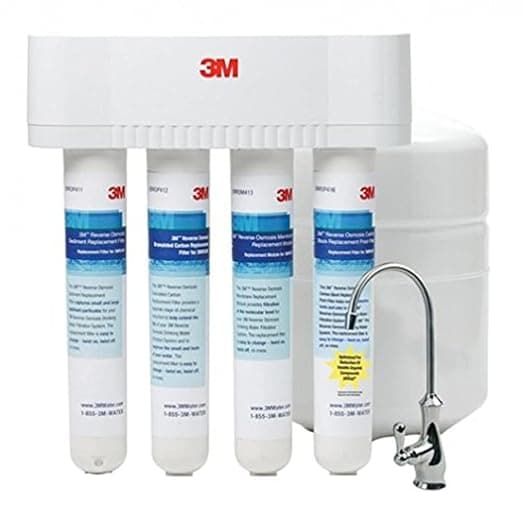Waukesha Tap Water Quality Report
Waukesha's water has 4 contaminants above EPA MCLGs. We recommend using a certified water filter.
Utility
WAUKESHA WATER UTILITY
People Served
70,718
MCL Violations
103
Last Updated
Is Waukesha Tap Water Safe to Drink?
Waukesha's water has 4 contaminants above EPA health-based guidelines. We strongly recommend using a certified water filter to reduce exposure to these contaminants. Check our filter recommendations below for NSF-certified options that can remove the specific contaminants found in Waukesha's water.
The data below shows test results from WAUKESHA WATER UTILITY, which serves 70,718 people in the Waukesha area. Water quality testing is conducted regularly and reported to the EPA. This report was last updated 2024-04-05.
Waukesha Water Quality Test Results
Key Water Quality Metrics
Contaminants Detected
⚠️ Contaminants Above EPA MCLG (4)
Gross Alpha Activity
What is Gross Alpha Activity?
Gross alpha activity measures the total amount of radioactivity in a water sample emitted by decaying alpha-emitting elements, notably radioactive isotopes of uranium, radium, and radon. Alpha emitters are used to treat cancer, as an eliminator of static in paper mills and in other products like smoke detectors. Radioactive atoms release high energy alpha particles that pull electrons off of the atoms in cells. This process is called ionizing radiation, and may lead to harmful changes in cells and tissues. The toxicity of an alpha emitter depends on the amount of energy it releases and how organ systems respond to that energy. Exposure to elevated gross alpha activity is associated with increased cancer risk and genotoxicity, but toxicity to individual systems is dependent on the type of alpha emitter present.
Health Effects
Drinking water standards for gross alpha activity have been developed based on increased cancer risk associated with alpha radioactivity. Alpha radiation has been shown to produce DNA changes (genotoxicity) in laboratory studies.
Affected Organs
Common Sources
Bromodichloromethane
What is Bromodichloromethane?
Member of trihalomethanes (THMs) that form in water treated with chlorine
Health Effects
Health protective benchmarks for BDCM are based on carcinogenicity and liver toxicity observed in animal studies. The EPA has classified BDCM as a probable human carcinogen. Results from animal studies also suggest that kidney, immune system, spleen, and developmental toxicity are associated with exposure to BDCM. BDCM has been shown to produce DNA changes (genotoxicity) in laboratory studies.
Affected Organs
Common Sources
Radium, combined (-226 & -228)
What is Radium, combined (-226 & -228)?
Radium is a naturally occurring radioactive metal that is part of the uranium decay series. It is found in trace amounts in soil, rock, and water. Radium is known for its radioactive properties and can emit alpha, beta, and gamma radiation. It is a heavy metal and can be harmful to human health when ingested or inhaled.
Health Effects
Exposure to radium can lead to serious health issues, including an increased risk of cancer, particularly bone cancer. It can also cause damage to the bone marrow and other organs. Long-term exposure may result in anemia, immune system suppression, and other health complications.
Affected Organs
Common Sources
Gross Alpha (Excl. Radon and Uranium)
What is Gross Alpha (Excl. Radon and Uranium)?
Gross alpha activity is a measure of the total alpha particle activity in a water sample, excluding radon and uranium. It is used to assess the presence of radioactive contaminants in drinking water.
Health Effects
Exposure to high levels of alpha radiation can lead to an increased risk of cancer, particularly in the bones and other tissues where alpha particles can deposit energy.
Affected Organs
Common Sources
Understanding the Data
This data comes from your local water utility testing. The bar charts compare detected levels against EPA's Maximum Contaminant Level Goal (MCLG). Contaminants above the MCLG are shown by default and may require filtration. All other tested contaminants are within safe levels and can be viewed by expanding the section above.
Recommended Water Filters for Waukesha
Based on Waukesha's water quality data, these NSF-certified filters are recommended to remove contaminants above EPA MCLGs.

Solventum Purification Inc.
3MRO401
NSF Certified:
Daily Production
11.48 gpd
Removes 15 contaminants:
Arsenic, Barium, Cadmium, Chromium (Total), Chromium (VI) +10 more

Solventum Purification Inc.
3MRO301
NSF Certified:
Daily Production
11.48 gpd
Removes 15 contaminants:
Arsenic, Barium, Cadmium, Chromium (Total), Chromium (VI) +10 more

Whirlpool Corporation
W11256135
NSF Certified:
Capacity
1001 gal
Filter Life
3 mo
Flow Rate
0.7 gpm
Removes 19 contaminants:
1,2 Dichlorobenzene, 1,4 Dichlorobenzene, 2,4-D, Asbestos, Atrazine +14 more

Whirlpool Corporation
W11569861
NSF Certified:
Capacity
1001 gal
Filter Life
3 mo
Flow Rate
0.52 gpm
Removes 22 contaminants:
1,2 Dichlorobenzene, 1,2,4 Trichlorobenzene, 1,4 Dichlorobenzene, 2,4-D, Asbestos +17 more
Verify Your Water Quality with Independent Testing
With 4 contaminants above EPA health guidelines, independent laboratory testing provides a second opinion and can track changes over time.

SimpleLab
Advanced Home Water Test
$369
Most comprehensive home water test including all standard tests plus additional parameters for ultimate peace of mind.

SimpleLab
Standard Home Water Test
$232
Comprehensive water analysis testing over 200 contaminants including bacteria, heavy metals, and chemical compounds.

Tap Score
Advanced Microplastics Test
$636
Cutting-edge testing for microplastics particles in drinking water using advanced laboratory techniques.
Frequently Asked Questions About Waukesha Tap Water
Waukesha's water has 4 contaminants above EPA MCLGs. We strongly recommend using a certified water filter to reduce exposure to these contaminants. Check our filter recommendations below for NSF-certified options that can remove the specific contaminants found in Waukesha's water.